-
 Bitcoin
Bitcoin $79,309.9469
5.46% -
 Ethereum
Ethereum $1,575.4794
6.76% -
 Tether USDt
Tether USDt $0.9996
0.03% -
 XRP
XRP $1.8684
10.75% -
 BNB
BNB $559.1592
4.86% -
 USDC
USDC $0.9998
-0.02% -
 Solana
Solana $108.9193
9.75% -
 Dogecoin
Dogecoin $0.1493
10.49% -
 TRON
TRON $0.2326
3.85% -
 Cardano
Cardano $0.5862
10.61% -
 UNUS SED LEO
UNUS SED LEO $8.9694
0.72% -
 Toncoin
Toncoin $3.1094
5.06% -
 Chainlink
Chainlink $11.6110
10.41% -
 Avalanche
Avalanche $17.1493
12.22% -
 Stellar
Stellar $0.2310
12.64% -
 Shiba Inu
Shiba Inu $0.0...01132
6.17% -
 Hedera
Hedera $0.1578
22.08% -
 Sui
Sui $2.0151
12.13% -
 MANTRA
MANTRA $6.2854
6.64% -
 Polkadot
Polkadot $3.5990
7.58% -
 Bitcoin Cash
Bitcoin Cash $276.8413
7.33% -
 Litecoin
Litecoin $71.4393
9.84% -
 Dai
Dai $1.0000
0.01% -
 Ethena USDe
Ethena USDe $0.9990
0.07% -
 Bitget Token
Bitget Token $4.1736
10.38% -
 Pi
Pi $0.5864
5.86% -
 Hyperliquid
Hyperliquid $11.9119
22.51% -
 Monero
Monero $207.4588
8.04% -
 Uniswap
Uniswap $5.1898
7.27% -
 OKB
OKB $52.1447
2.68%
How to understand Floor price in the NFT field?
The floor price of an NFT collection is the lowest listed price across marketplaces, influenced by project popularity, market sentiment, and recent sales activity.
Apr 06, 2025 at 10:43 pm
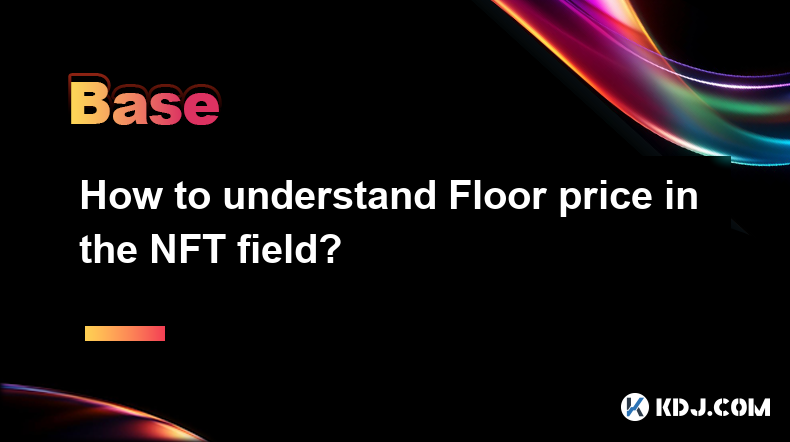
Deconstructing the NFT Floor Price
The term "floor price" in the NFT (Non-Fungible Token) space refers to the lowest price at which a specific NFT collection's item is currently being offered for sale on a given marketplace. It's essentially the cheapest you can buy any NFT from that collection at a particular moment. Understanding the floor price is crucial for both buyers and sellers navigating the NFT market.
Factors Influencing the Floor Price
Several factors dynamically influence an NFT collection's floor price. Project popularity plays a significant role; highly sought-after collections tend to have higher floor prices. Market sentiment also impacts the price, with positive news or hype potentially driving it up and negative news causing a drop. The number of available NFTs on the market also matters; a scarcity of available NFTs can inflate the floor price. Finally, recent sales activity significantly impacts the floor price, as recent high-value sales can push the floor price upwards.
How the Floor Price is Determined
The floor price isn't set by a central authority; it's a constantly fluctuating reflection of the lowest listed price across all major marketplaces. Many NFT marketplaces display the floor price prominently. It's dynamically updated as new listings appear or existing ones are sold. Therefore, the floor price represents a constantly shifting benchmark reflecting real-time market activity. Understanding this dynamic nature is crucial.
Utilizing Floor Price Information
For buyers, the floor price offers a crucial reference point. It represents the minimum investment required to enter a specific NFT collection. However, it's essential to remember that just because an NFT is listed at the floor price doesn't guarantee a purchase at that price. Someone else might purchase it first.
For sellers, the floor price acts as an indicator of their NFT's minimum market value. Listing below the floor price can increase the likelihood of a quick sale, while listing above it might mean a longer wait. Understanding this balance is crucial for effective selling strategies.
Navigating Different Marketplaces
The floor price can vary slightly across different NFT marketplaces. This is due to differences in listing fees, user bases, and the overall trading volume on each platform. It's advisable to check multiple marketplaces to get a comprehensive understanding of the true floor price for a given collection. Always compare across OpenSea, Rarible, LooksRare, and other significant platforms.
Understanding Floor Price Manipulation
It's important to be aware that floor prices can be manipulated. Wash trading, where individuals buy and sell NFTs among themselves to artificially inflate prices, is a common concern. Similarly, large-scale buying or selling by a single entity or group can also significantly impact the floor price. Therefore, critical evaluation of market activity is essential to avoid being misled by artificial price fluctuations.
The Role of Market Trends in Floor Price
The overall market trend significantly impacts floor prices. During bull markets, when the overall crypto market is experiencing growth, NFT floor prices tend to rise. Conversely, during bear markets, when the crypto market is experiencing a downturn, NFT floor prices typically fall. Understanding these broader market forces is essential for informed decision-making.
Floor Price and Project Roadmap
The project roadmap and future development plans of an NFT collection can also influence its floor price. Positive developments, such as the announcement of new utilities or partnerships, can lead to an increase in the floor price. Conversely, negative news or delays in development can cause the floor price to drop. Therefore, staying informed about a project's progress is crucial.
Identifying Genuine Floor Price Increases
A genuine increase in floor price often reflects increased demand and desirability for a collection. This is usually accompanied by increased trading volume and community engagement. However, it’s vital to distinguish between genuine increases and artificially inflated prices resulting from manipulation. Look for consistent growth over time, rather than sudden spikes.
Floor Price and Community Engagement
Strong community engagement can significantly impact an NFT collection's floor price. An active and engaged community often translates to increased demand and higher prices. Conversely, a lack of community engagement can lead to lower prices. Therefore, evaluating the health and activity of a collection's community is crucial.
Steps to Find the Floor Price of an NFT Collection
- Visit Major NFT Marketplaces: Start by visiting popular marketplaces like OpenSea, Rarible, and LooksRare.
- Locate the Collection: Search for the specific NFT collection you're interested in.
- Check the Listing Prices: Examine the prices of the listed NFTs within the collection.
- Identify the Lowest Price: The lowest listed price represents the current floor price.
- Compare Across Marketplaces: Repeat this process on several marketplaces for a more accurate assessment.
Frequently Asked Questions
Q: What does a low floor price indicate?
A: A low floor price might suggest either a lack of current demand or an opportunity to acquire an NFT at a relatively inexpensive price. However, it could also indicate a project with inherent flaws or limited potential.
Q: Can the floor price go to zero?
A: Yes, the floor price can indeed go to zero if there's no demand for the NFTs in the collection. This is particularly true for projects that lack ongoing development or community support.
Q: How often does the floor price change?
A: The floor price is constantly changing, reflecting real-time market activity. It can fluctuate frequently, even within minutes, depending on buying and selling activity.
Q: Is the floor price a reliable indicator of an NFT's future value?
A: The floor price is not a guaranteed indicator of future value. While it reflects current market sentiment, the value of an NFT can increase or decrease significantly based on various factors.
Q: What if I buy an NFT at the floor price, and the price drops further?
A: The value of NFTs can fluctuate. Buying at the floor price doesn't guarantee against future price drops. Investing in NFTs carries inherent risk.
Q: How can I track floor price changes over time?
A: Several websites and tools track NFT floor price changes for various collections. Some marketplaces also offer historical price charts.
Disclaimer:info@kdj.com
The information provided is not trading advice. kdj.com does not assume any responsibility for any investments made based on the information provided in this article. Cryptocurrencies are highly volatile and it is highly recommended that you invest with caution after thorough research!
If you believe that the content used on this website infringes your copyright, please contact us immediately (info@kdj.com) and we will delete it promptly.
- Wyoming Is Launching a Stablecoin Later This Year, Which Could Be the First Issued by a Public Entity in the U.S.
- 2025-04-08 14:20:12
- BNB vs SOL: Which Crypto to Invest in?
- 2025-04-08 14:20:12
- Big News for XRP as Ripple CEO Meets with Trump and Sparks Intrigue Within the Cryptocurrency Community Hinting at Promising Developments.
- 2025-04-08 14:15:12
- Interactive Brokers Expands Cryptocurrency Portfolio by Adding Four Major Altcoins
- 2025-04-08 14:15:12
- US stocks fall on Wednesday, dragged down by a sharp sell-off in tech stocks, as renewed trade war concerns rattle investors
- 2025-04-08 14:10:12
- Just 24 Hours After Adding Its Name to the Roster of Companies Pursuing a Bitcoin (BTC) Treasury Strategy, GameStop (GME) — Led by Its CEO Ryan Cohen — Is Also Adding Its Name to Those Firms Issuing Convertible Debt to Raise Funds for BTC Acquisition
- 2025-04-08 14:10:12
Related knowledge
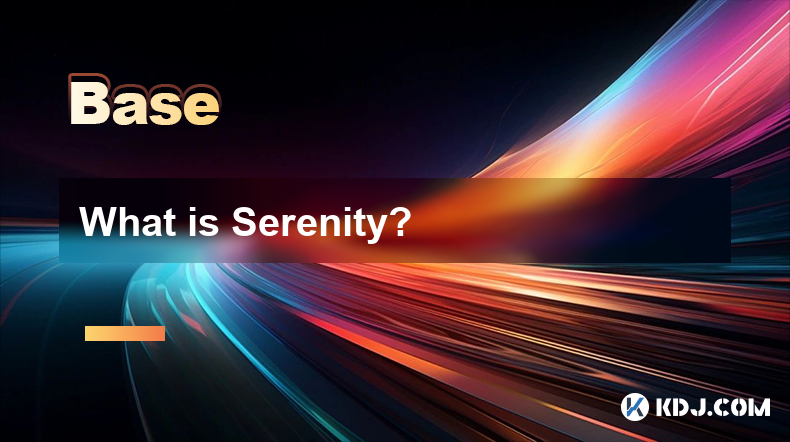
What is Serenity?
Apr 08,2025 at 02:00pm
Serenity, also known as Ethereum 2.0, represents a major upgrade to the Ethereum blockchain. This ambitious project aims to address the scalability, security, and sustainability issues faced by the current Ethereum network. Serenity is not a single update but a series of upgrades that will transform Ethereum into a more efficient and robust platform. Th...

What is Finality Gadget?
Apr 08,2025 at 04:14am
The Finality Gadget is a crucial component in the architecture of certain blockchain networks, particularly those that utilize a hybrid consensus mechanism. It plays a pivotal role in ensuring the finality of transactions, which means that once a transaction is confirmed, it cannot be altered or reversed. This article delves into the intricacies of the ...
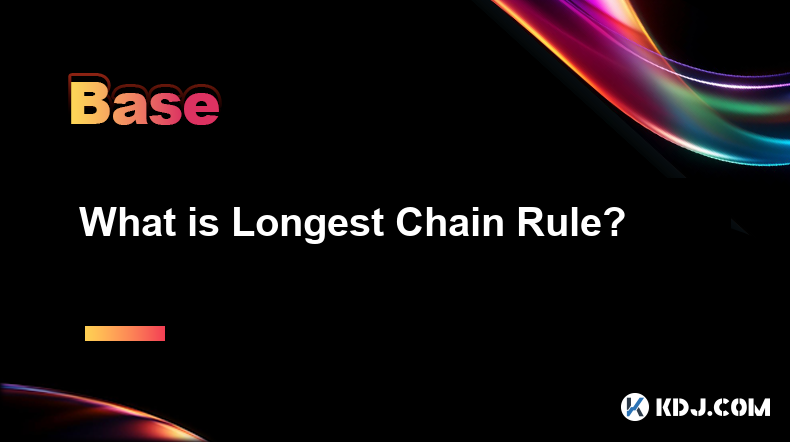
What is Longest Chain Rule?
Apr 08,2025 at 07:50am
The Longest Chain Rule is a fundamental concept in blockchain technology, particularly in the context of cryptocurrencies like Bitcoin. This rule is crucial for maintaining the integrity and security of the blockchain network. In essence, the Longest Chain Rule dictates that the valid blockchain is the one with the most cumulative proof-of-work, which i...

What is Orphan Block?
Apr 08,2025 at 05:00am
What is an Orphan Block?In the world of cryptocurrencies, particularly in blockchain technology, the term orphan block is frequently encountered. An orphan block is a block that has been mined and added to the blockchain but is later discarded or replaced by another block. This phenomenon occurs due to the decentralized nature of blockchain networks, wh...
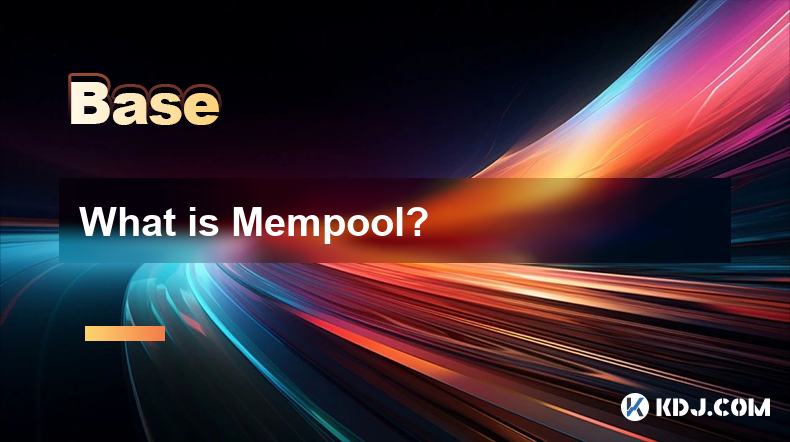
What is Mempool?
Apr 08,2025 at 12:36pm
What is Mempool?In the world of cryptocurrencies, particularly Bitcoin, the term Mempool is frequently mentioned. But what exactly is a Mempool, and why is it important? A Mempool, short for memory pool, is a critical component of the blockchain network that serves as a temporary storage area for unconfirmed transactions. When a user initiates a transac...
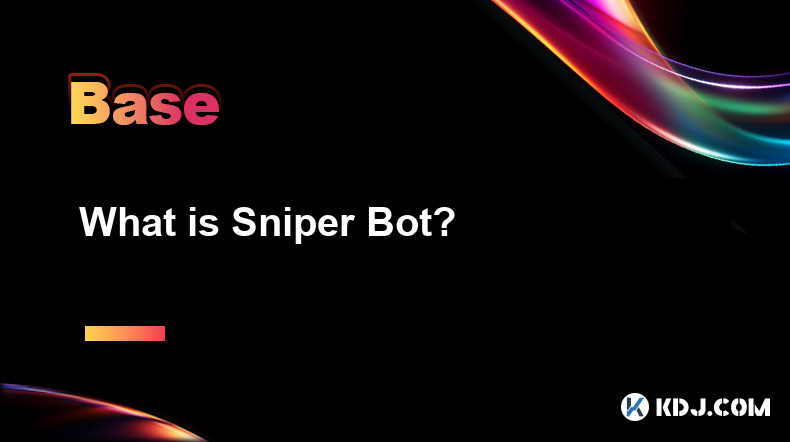
What is Sniper Bot?
Apr 07,2025 at 10:43pm
A Sniper Bot is a type of automated trading software used within the cryptocurrency market to execute trades at optimal times, often milliseconds before other traders. These bots are designed to take advantage of new token listings, price fluctuations, and other market opportunities to buy or sell assets quickly and efficiently. The primary goal of a Sn...

What is Serenity?
Apr 08,2025 at 02:00pm
Serenity, also known as Ethereum 2.0, represents a major upgrade to the Ethereum blockchain. This ambitious project aims to address the scalability, security, and sustainability issues faced by the current Ethereum network. Serenity is not a single update but a series of upgrades that will transform Ethereum into a more efficient and robust platform. Th...

What is Finality Gadget?
Apr 08,2025 at 04:14am
The Finality Gadget is a crucial component in the architecture of certain blockchain networks, particularly those that utilize a hybrid consensus mechanism. It plays a pivotal role in ensuring the finality of transactions, which means that once a transaction is confirmed, it cannot be altered or reversed. This article delves into the intricacies of the ...

What is Longest Chain Rule?
Apr 08,2025 at 07:50am
The Longest Chain Rule is a fundamental concept in blockchain technology, particularly in the context of cryptocurrencies like Bitcoin. This rule is crucial for maintaining the integrity and security of the blockchain network. In essence, the Longest Chain Rule dictates that the valid blockchain is the one with the most cumulative proof-of-work, which i...

What is Orphan Block?
Apr 08,2025 at 05:00am
What is an Orphan Block?In the world of cryptocurrencies, particularly in blockchain technology, the term orphan block is frequently encountered. An orphan block is a block that has been mined and added to the blockchain but is later discarded or replaced by another block. This phenomenon occurs due to the decentralized nature of blockchain networks, wh...

What is Mempool?
Apr 08,2025 at 12:36pm
What is Mempool?In the world of cryptocurrencies, particularly Bitcoin, the term Mempool is frequently mentioned. But what exactly is a Mempool, and why is it important? A Mempool, short for memory pool, is a critical component of the blockchain network that serves as a temporary storage area for unconfirmed transactions. When a user initiates a transac...

What is Sniper Bot?
Apr 07,2025 at 10:43pm
A Sniper Bot is a type of automated trading software used within the cryptocurrency market to execute trades at optimal times, often milliseconds before other traders. These bots are designed to take advantage of new token listings, price fluctuations, and other market opportunities to buy or sell assets quickly and efficiently. The primary goal of a Sn...
See all articles






















































































